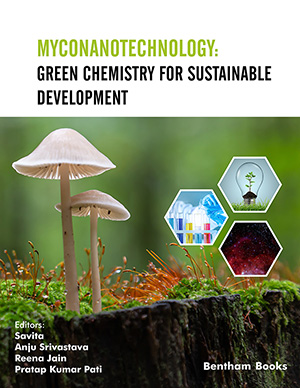Abstract
Nanotechnology is the science of research and development at the nanoscale
(i.e. 10-9 m) at least in one dimension. The capability of nanotechnology is often known
to revolve around nanoparticles. The core versatility of the nanoparticles is the fact that
they exhibit more significant properties than that of bulk counterparts. Nanobionics is
the structural and functional study of biological systems which serve as a model for the
design and engineering of materials and machines at the cistron level. Fungi have
emerged as important systems for the synthesis of nanoparticles due to the production
of extracellular enzymes which can utilize heavy metal ions and produce nanoparticles,
easy to isolate and subculture on synthetic media due to low nutritional requirements,
high wall binding capacity, simpler biomass handling and extracellular synthesis of
nanoparticle help in easy downstream processing. Fungi can produce nanoparticles
both extracellularly as well as intracellularly. For example, the synthesis of silver
nanoparticles has been reported utilizing many ubiquitous fungal species including
Trichoderma, Fusarium, Penicillium, Rhizoctonia, Pleurotus and Aspergillus.Extracellular synthesis has been shown by Trichoderma viridae while intracellular
synthesis was shown to occur in a Verticillium species, and in Neurospora crassa
whereas the synthesis of gold nanoparticles has been reported utilizing Fusarium,
Neurospora, Verticillium, yeasts, and Aspergillus. In this chapter, we further focus on
the applications of fungal nanobionics in various industries
Keywords: Extracellular synthesis, Fungal nanotechnology, Nanobionics, Nanoparticles.






















